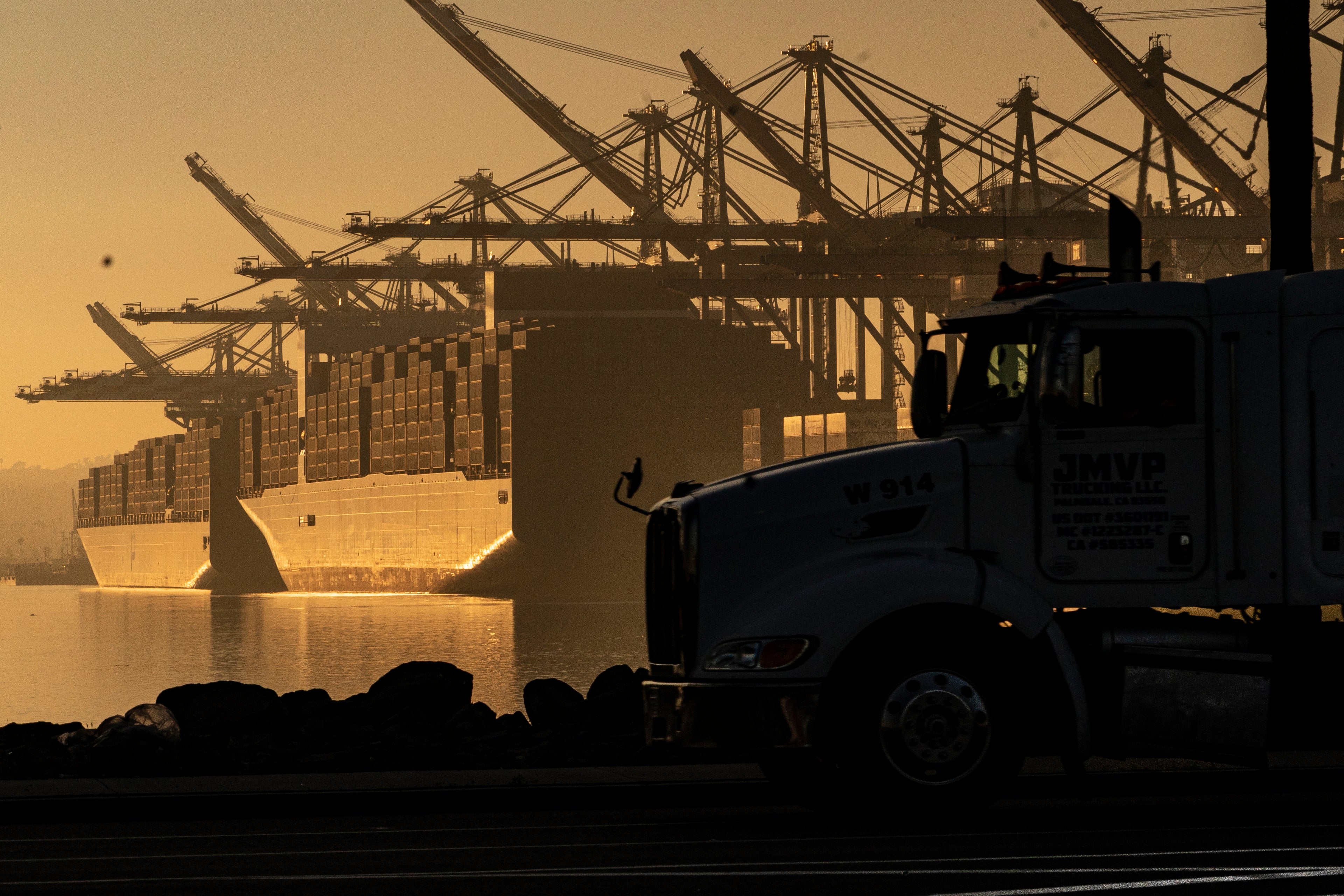LA port sees record 2021 imports despite supply chain snags
The Port of Los Angeles is on track to move a record volume of import cargo this year

Your support helps us to tell the story
From reproductive rights to climate change to Big Tech, The Independent is on the ground when the story is developing. Whether it's investigating the financials of Elon Musk's pro-Trump PAC or producing our latest documentary, 'The A Word', which shines a light on the American women fighting for reproductive rights, we know how important it is to parse out the facts from the messaging.
At such a critical moment in US history, we need reporters on the ground. Your donation allows us to keep sending journalists to speak to both sides of the story.
The Independent is trusted by Americans across the entire political spectrum. And unlike many other quality news outlets, we choose not to lock Americans out of our reporting and analysis with paywalls. We believe quality journalism should be available to everyone, paid for by those who can afford it.
Your support makes all the difference.The Port of Los Angeles — the nation’s busiest — is on track to move a record volume of import cargo this year, even as officials struggle to thin a backup of ship traffic and ease supply chain snarls that have been blamed for product shortages and higher shelf prices.
“The sustained and unmatched demand by the American consumer is pushing our import numbers to new levels,” Gene Seroka, executive director of the Port of Los Angeles, told reporters in an online briefing. “We’re on track for an all-time import record in ... 2021.”
Cargo containers are moving off the docks faster, Seroka said, but even so nearly 100 ships were drifting near the port or its neighboring sister port in Long Beach or headed toward them.
Meanwhile, about two months after President Joe Biden announced a deal to establish around-the-clock operations at the Los Angeles port, only one of seven container terminals has met that goal. Part of the problem is establishing 24-hour operations is coordinating the various stops in the supply chain at overnight hours, including warehouse space and truck transportation.
Seroka said the Los Angeles port expected to import about 5.5 million container units of cargo this year, a 13% jump over the previous record set in 2018. Despite a range of steps intended to speed up the flow of cargo, the November import total was down from 2020, in part because many of the ships that arrived were unscheduled and smaller in size.
He said warehouse inventory is up about 2 points over the same time last year, and in-store inventories are only slightly behind 2020 levels for November.
“Even with the strains on the supply chain, we continue to deliver record amounts of cargo,” he said. More needs to be done but “goods are making their way into the hands of consumers and manufacturers across the country.”
Exports continued a long slide, with 33 of the last 37 months registering declines. Seroka attributed the drop in part to trade tensions with China under the Trump administration, a stronger dollar that makes U.S. products less competitive and the large number of empty containers leaving the port for Asia which take up space that could otherwise be used by U.S. products.
Seroka said the number of import containers on the docks lingering for nine or more days has dropped by 56%, since port officials threatened to impose fees for slow-moving cargo that sits on the docks.
Another challenge: Seroka said over 70,000 empty containers are sitting at terminals or port property, which can make it more difficult to move cargo to trucks and rail. He said port officials are urging shipping companies to clear out the backlog and, if necessary, the agency could consider financial penalties for companies that fail to do so.
Asked why the congested line-up of ships remain, despite efforts to improve operations, Seroka said, “The strength of the American consumer — American factories trying to improve output — just simply means more cargo is on its way.”
And he indicated that snags in the supply chain, given its complexity, are likely to continue.
“It’s almost like a game of Whac-a-Mole. We try to get after one issue and then two or three more pop up,” he said.